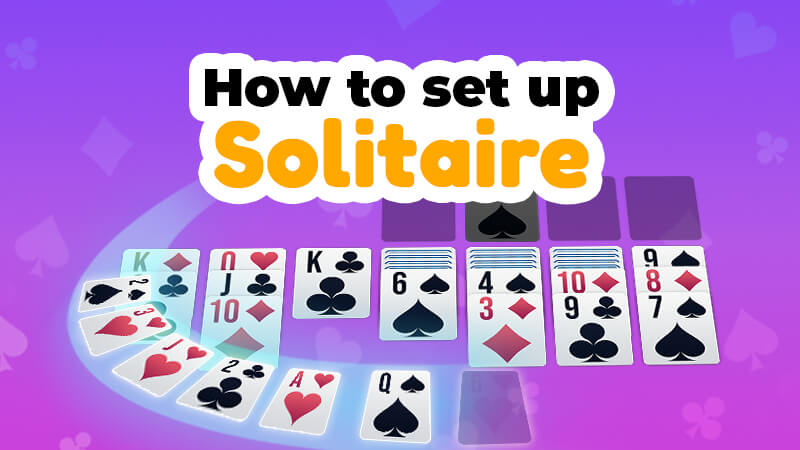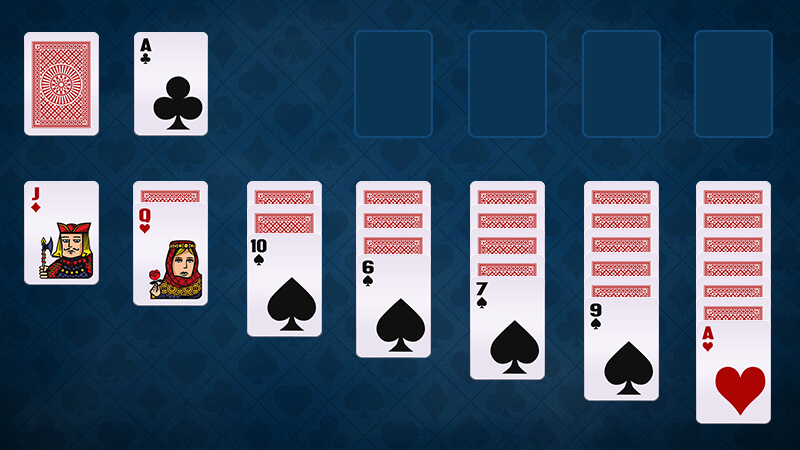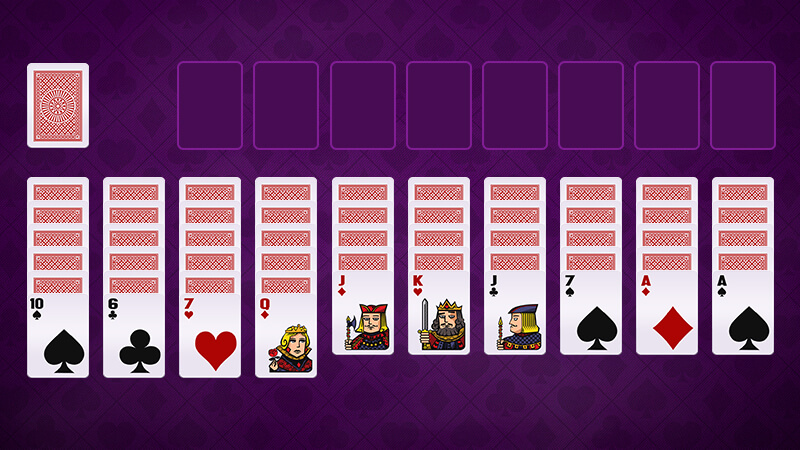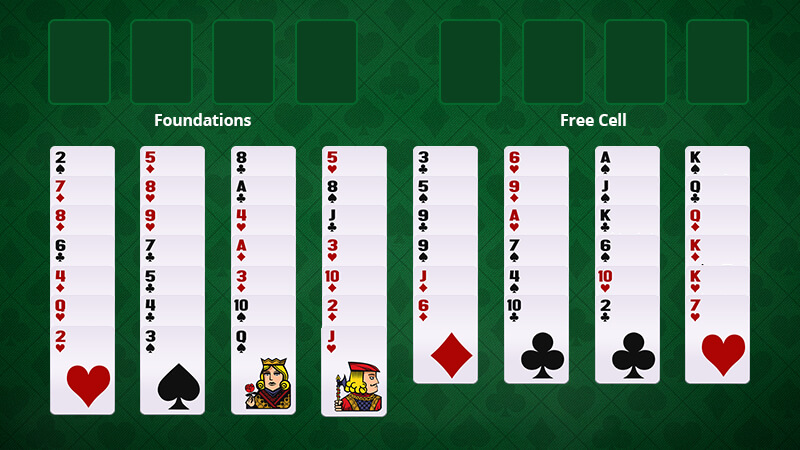How to Set up Solitaire

Table of Contents
Solitaire originates in the 18th century. Its enduring popularity has transcended generations and evolved into various captivating variations like Klondike, Spider, and Freecell. Today, we play these games on computers and mobile devices. But before these were widely available, people used to set up solitaire games with real cards by hand.
In this blog post, we will explain how to set up solitaire in its three most common variations. So, if you don’t have a computer, or a phone with you, you would know how to play these games with nothing but a deck of cards.
Different Solitaire Variations
Solitaire comes in various engaging variations, each with its unique set of rules and challenges. The primary objective of Solitaire is to arrange the cards in a specific manner, often involving building sequences and suits. Let’s explore some of the most popular Solitaire variations:
Klondike Solitaire
The classic and widely recognized version aims to build four foundation piles in ascending order from Ace to King, following suit. The challenge lies in strategically uncovering and moving cards from the tableau to the foundation while adhering to specific tableau rules.
Spider Solitaire
This variation involves eight foundation piles to create sequences in descending order from King to Ace. Players must assemble complete sequences of the same suit to successfully clear the tableau. With multiple tableau piles and limited movement, Spider Solitaire demands careful planning and a keen eye for opportunities.
Freecell Solitaire
Here we have a more open and strategic approach. With four foundation piles and four empty cells, players can strategically move cards around to build sequences in ascending order by suit. This variation allows for greater freedom in rearranging cards and demands a balance of patience and foresight.
How to set up Solitaire Klondike
Setting up Klondike Solitaire is a simple process that requires only a deck of cards and a flat surface. Follow this step-by-step guide to arrange the game and start playing in no time:
- Shuffle the deck: Begin by thoroughly shuffling the 52-card deck to ensure randomness and unpredictability in the game.
- Deal the cards: Start by dealing seven cards in a row with the first facing up. Then, starting on the second column, deal six cards. After that, starting on the third column, deal five cards. Then, from the fourth column, deal four cards. From the fifth column, deal three cards. From the sixth column, deal two cards. Finally, deal the final card face up.
- Stockpile: Place the remaining 24 cards on the left-hand side, and that’s your stockpile. During the course of the game, you will draw cards from this stockpile and attempt to play them in your Solitaire tableau or on foundation piles.
- Foundation piles: The tableau is where the main gameplay takes place, and cards can be moved between piles according to specific rules. The objective is to build four foundation piles, starting with an Ace and ending with a King, for each suit.
Klondike Solitaire can be played with different variations, such as Draw 1, where one card is drawn from the deck at a time, or Draw 3, where three cards are drawn at once. Choosing the Draw variation can add excitement and complexity to your game, so feel free to experiment and find the one that suits your preference and skill level.

How to set up Solitaire Spider
Setting up Spider Solitaire involves a distinct approach from Klondike and offers a delightful challenge for card game enthusiasts. Follow these steps to get started:
- Difference between Klondike and Spider: Spider Solitaire is played with two decks of cards, totaling 104 cards, which is twice the number used in Klondike. Additionally, the game’s objective is to build sequences of the same suit in descending order from King to Ace, rather than ascending order as in Klondike.
- Deal the cards: Begin by shuffling the two decks of cards thoroughly to ensure randomness. Then, deal ten piles of cards, creating the tableau. The first four piles should have 5 face-down cards, and the remaining six piles should have 4 face-down cards. Each pile contains 1 face-up card. The remaining cards form the stockpile. Eight other cells are left for foundation piles.
- Overview of building sequences: In Spider Solitaire, you can build sequences of cards in descending order, but they must belong to the same suit. For instance, you can move a sequence of cards starting with a 10 of hearts down to an Ace of hearts.

How to set up Solitaire Freecell
Setting up Freecell Solitaire introduces players to a distinctive set of game mechanics that sets it apart from other Solitaire variations. Follow these steps to get started:
- Introduction: Unlike many other Solitaire games, Freecell allows players to move cards freely between tableau piles and four open cells. This freedom of movement grants greater flexibility and strategic planning, making it a favorite among enthusiasts looking for a more cerebral challenge.
- Deal the cards: Start by shuffling a standard 52-card deck thoroughly. Deal all 52 cards face-up into eight tableau piles, with the first four piles containing seven cards each and the remaining four piles containing six cards each. Leave four cells open for movement and four other cells for foundation piles.
- Tips for strategic moves: Keep the cells as open as possible to store key cards temporarily and facilitate movement. Prioritize building up foundations early on, and aim to complete entire sequences of suits in the foundation piles to create space in the tableau. Analyze the board carefully before making moves, and consider the consequences of each decision.
By grasping the unique mechanics of Freecell Solitaire and applying strategic thinking, you’ll find yourself engaged in a mentally stimulating and gratifying gaming experience.

Now read our blog post on How to Set up Backgammon!
Subscribe now
Receive updates and latest news about VIP Games. Simply enter your email below and get notified!
You will only receive quality content.
Signing up for newsletters indicates you agree with our Privacy Policy. If you decide that you no longer want to receive a newsletter, you can unsubscribe by clicking the “Unsubscribe” link, located at the bottom of each newsletter.
